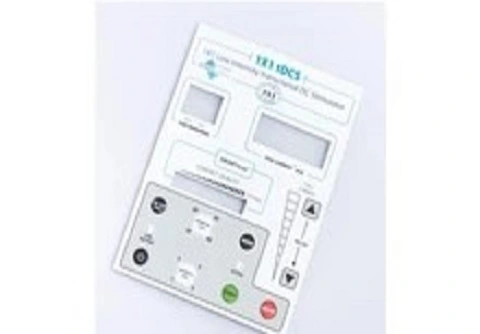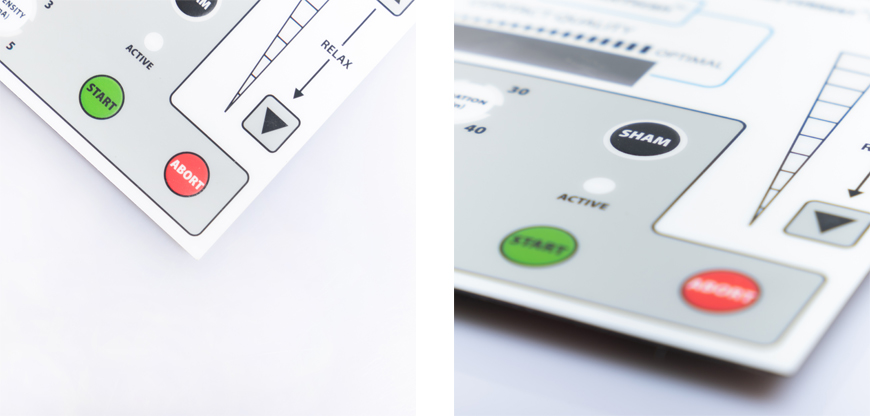
In today's fast-paced world, user interfaces play a crucial role in various industries, from consumer electronics to industrial machinery. One of the innovative solutions that have gained popularity in recent years is the FPC SMD LED Membrane Switch. This article will explore this technology, its applications, benefits, and why it's becoming a go-to choice for interface design.

FPC (Flexible Printed Circuit) SMD (Surface-Mount Device) LED Membrane Switches represent an advanced solution in user interface technology. These switches combine the flexibility and durability of FPCs with the illumination and feedback capabilities of SMD LEDs. The switch itself is a thin, flexible circuit that integrates both the conductive layers for registering user input and SMD LEDs for providing visual feedback. These features make them ideal for applications requiring space-saving, high-performance interfaces, and enhanced user interaction.
FPC SMD LED Membrane Switches work through a combination of pressure-sensitive materials and embedded SMD LEDs. The switch consists of multiple layers: a flexible base layer (typically made of polyester or polyimide), conductive traces, and insulating layers. When a user applies pressure to a specific section of the switch, the underlying conductive layers come into contact, completing the circuit and registering the input.
The SMD LEDs, integrated into the switch design, serve two main purposes:
Illumination: The LEDs light up the interface, providing visibility in low-light conditions, and enhancing the aesthetic appeal of the device.
Feedback: The LEDs provide real-time feedback to the user. They can indicate a variety of states, such as a successful action (e.g., green light for success) or an error (e.g., red light for failure), offering a more interactive and informative experience for the user.
The seamless integration of tactile feedback from the membrane and visual feedback from the LEDs makes FPC SMD LED Membrane Switches a highly efficient and user-friendly solution.
Due to their versatility, FPC SMD LED Membrane Switches are increasingly used in a wide array of industries. Some of the most prominent applications include:
Consumer Electronics: These membrane switches are widely used in devices like keyboards, remote controls, and smartphones, where compact and efficient interfaces are required. The LED integration adds visual clarity, especially in low-light environments.
Medical Devices: In diagnostic equipment, monitoring systems, and portable medical devices, these switches provide an intuitive and reliable interface, crucial for fast-paced and critical applications.
Automotive Industry: FPC SMD LED Membrane Switches are common in dashboard controls, infotainment systems, and climate control panels. Their resistance to vibration and environmental factors, combined with their slim profile, makes them ideal for automotive applications.
Industrial Machinery: In process control panels, machinery interfaces, and robotic controls, these switches allow operators to manage complex systems efficiently. The integration of SMD LEDs ensures visibility even in harsh, high-noise environments.
Aerospace: These switches are found in cockpit interfaces where reliability and quick feedback are essential. The combination of tactile feedback and LED lighting ensures pilots receive immediate visual and physical cues, which are critical in high-stakes situations.
Military Equipment: FPC SMD LED Membrane Switches are designed for ruggedized controls in military environments. Their ability to withstand extreme temperatures, moisture, and physical stress while providing clear visual feedback makes them perfect for mission-critical equipment.
FPC SMD LED Membrane Switches offer numerous advantages, making them a preferred choice in many applications:
Space Efficiency: These switches are thin and lightweight, enabling designers to save valuable space. Their compact nature allows them to be integrated into smaller devices or applications with strict space constraints.
Durability: Known for their resistance to harsh environmental factors like moisture, dust, temperature extremes, and chemicals, FPC SMD LED Membrane Switches offer high durability. This makes them suitable for use in rugged industrial, automotive, and military applications.
Customization: The design flexibility of FPC SMD LED Membrane Switches means they can be easily tailored to meet specific needs, from button layout and feedback types (e.g., different LED colors or flashing patterns) to form factors and materials.
Cost-Effective: Compared to traditional mechanical switches, FPC SMD LED Membrane Switches are often more affordable. Their simple construction, fewer moving parts, and reduced need for complex mechanical assemblies lower both manufacturing and maintenance costs.
Long Lifespan: The lack of mechanical parts in FPC SMD LED Membrane Switches means they can last much longer than conventional switches. With a high cycle count and minimal wear, these switches can operate reliably for millions of presses, making them ideal for high-usage applications.
As technology continues to evolve, the future of FPC SMD LED Membrane Switches looks promising. Expected trends include:
Increased Integration with Touch and Gesture Recognition: As the demand for more intuitive user interfaces grows, future membrane switches may integrate capacitive touch sensors or gesture recognition technology, enabling more advanced and seamless user experiences.
Smarter Feedback Systems: As devices become more connected and intelligent, FPC SMD LED Membrane Switches are likely to incorporate more sophisticated feedback systems. For example, they could communicate with other devices or provide real-time notifications through the LED interface.
Improved Customization Options: As the demand for personalized and tailored user experiences grows, manufacturers may develop more versatile switches that offer customizable LED colors, brightness levels, and designs to match different aesthetic preferences and functional needs.
Expanded Use in IoT Devices: With the rise of the Internet of Things (IoT), these switches will likely find new applications in smart home devices, wearable technology, and other IoT-enabled products, where compactness, durability, and user feedback are essential.
Q: Are FPC SMD LED Membrane Switches waterproof?
A: Yes, many variants of these switches are designed to be waterproof, making them suitable for outdoor and marine applications.
Q: Can FPC SMD LED Membrane Switches be used in extreme temperatures?
A: Yes, they are designed to withstand a wide temperature range, making them suitable for both hot and cold environments.
Q: How are FPC SMD LED Membrane Switches customized?
A: They can be customized in terms of design, layout, and the type of feedback they provide, allowing for a tailored user experience.
Q: Are FPC SMD LED Membrane Switches compatible with various electronics interfaces?
A: Yes, they can be integrated into a wide range of electronic devices and interfaces.
Q: Can FPC SMD LED Membrane Switches be repaired if they malfunction?
A: In most cases, malfunctioning switches can be replaced or repaired, ensuring minimal downtime in critical applications.